Resources

Growing up with a father who served as the director of the service-learning experiences at a faith-based college, I heard many stories of the joys and challenges of academic and non-profit agencies trying to work together. Later in my own teaching career, similar stories emerged as I witnessed the power and problems of out-of-the-classroom learning experiences. With a clearly stated goal (12), the authors of Community Partner Guide to Campus Collaboration effectively present an orderly guide for non-academic organizations to begin to develop mutually beneficial partnerships with post-secondary institutions. Building on the premise that “effective community-campus relationships educate students and enhance communities” (4), the authors provide multiple ideas and strategies for a community group to function in partnership with a post-secondary institution. After a brief introductory chapter, the book lays out in subsequent chapters particular ways for non-profit leaders to explore and establish potential relationships with colleges and instructors. Within the opening chapters, the authors provide a useful definition of reciprocity that notes the differences between charity and solidarity (41) in community-campus relationships. The authors set a foundation on which a mutually beneficial relationship for both organizational and individual involvement in such partnerships can be constructed. The book also presents a variety of examples to explain the concepts of community-campus relationships. Building on the opening chapters, the authors outline specific steps to assist an agency coordinator in both engaging faculty and empowering students for engaged learning. Again, a variety of practical examples and creative ideas are suggested. The final chapter on evaluation helps community partners, academic instructors, and students evaluate both the impact of their work with the organization and their own personal involvement and learning through such engaged learning experiences. There is little to criticize about this book since it speaks clearly to both academic and non-academic organizations. The authors’ illustrations demonstrate a breadth of experience working within both types of organizations and their writing style is welcoming to readers who may be unacquainted with how community group and college partnerships work together to produce significant student learning outcomes. Some checklists may have provided a helpful summary, but there are other visual clues in the book to emphasize their key points and demonstrate the benefits of this educational approach. The authors are clearly convinced that “communities are stronger when campuses and community agencies collaborate because it creates knowledgeable and engaged students who give back to their communities as committed citizens long after they graduate” (108). Their manual, written specifically for helping non-academic people navigate the post-secondary world, also benefits academics interested in connecting their students to experiential learning opportunities.
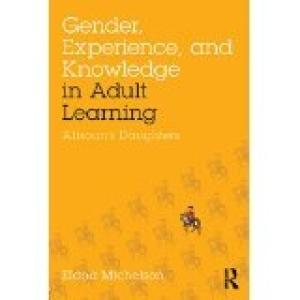
Institutions of higher education can treat the life experiences of adult learners as raw student material – material that requires expert educators to transform it into knowledge. Elana Michelson questions hegemonic tendencies in higher education that often perpetuate dualism of mind versus body as well as dismissive attitudes about the value of embodied knowledge. Her argument that “professional discourse concerning experiential learning remains rooted in the disembodied Enlightenment knower” rings true in theological education as well as other areas of scholarship (38). When claims of knowledge need to be authorized in some way, the process of authorization is always embedded in power relationships. Michelson elucidates these relationships through her examination of institutional assessment of life experience for academic credit. Her book serves as a window for surveying epistemological issues of trends in higher education. Academic scholars continue to question the legitimacy of learning from experience. Michelson traces the history of the program Assessment of Prior Experiential Learning (APEL), as it originated from liberal educational ideals responding to needs of returning war veterans after World Wars I and II. College equivalency assessment and training programs met needs for “both relevance and access” (103). Similar programs were generated globally with changes in educational multiculturalism and class mobility. The need for systems that evaluate experiential learning in order to assign academic credit and professional credentials continues to be furthered by globalization. Michaelson examines more recent developments in APEL as it responds to corporate and technical pressures on higher education. Michelson enlists Alisoun, the wife of Bath from Chaucer’s Canterbury Tales, as a memorable symbol of the canny, shrewd, embodied insight that stands in contrast to the orthodox knowledge of formal scholars and clerics. The figure of Alisoun creatively questions gendered polarities of body versus mind in the history of what counts as knowledge. Alisoun’s critique of the church’s leaders has a persuasive force while questioning textual authority, misogynistic attitudes of the priesthood, and orthodoxy’s monopoly on interpretation. Michelson beautifully illustrates her argument connecting tales of old wives like Alisoun with M.M. Bakhtin’s symbol of carnival as metaphor for the “transgressive possibilities of experiential learning” and “subversive knowledges” which may pose challenges to the economic and political structures of formal education (189). Although Michelson does not address theological education directly, religious studies programs and theological schools with programs in field education and contextual learning will benefit from her study. Authorization for ministry is changing rapidly. Consider an applicant for a Doctor of Ministry program who does not have a Master of Divinity degree but has decades of pastoral experience. Experiential knowing may be valuable, but how can that value be assessed? Unfortunately, people seem capable of failing to learn from their experience, so explicating the processes that facilitate learning from experience requires more study. Institutions of higher education or authorizing bodies who oversee workplace competencies must assess knowledge in terms of preparedness to practice professional tasks. Michaelson’s study would be stronger if she directly addressed specific examples of practical challenges of assessing the worth of experiential knowledge in consistent and fair ways. However, her book makes an important and timely contribution to the discourse on learning theory and will be valuable to those in religious studies and theological education, especially regarding intersections with critical-race theory, queer theory, and feminist theory.
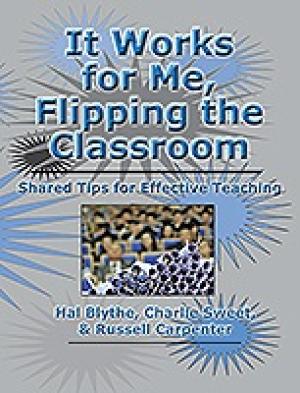
The pedagogical landscape of education has recently experienced a tectonic shift in terms of professional development. Once in the field, teachers seeking improvement and new ideas as to how to improve their craft, like so many professionals, used to wait for top-notch scholars to produce new research-based, paradigm-changing tomes. The thinking was that those in the trenches, those who filled kindergarten classrooms and chemistry labs across the country, were not creative enough to provide cutting-edge educational discoveries; only those who labored for a doctorate and took to the ivory towers of academia were capable of such exploration. Sadly, by the time these game-changing discoveries trickled down to the huddled masses in the faculty workroom, these ideas had already been discovered by accident and had been shared among the other faculty on the quad. Teacher’s in-service did not focus on the next great discovery but on how to share the discovery with fellow teachers. As this new wave of creative teachers began filling the gaps in higher education after proving themselves as master teachers and scholars in this area or that (and with the advent of social media), the focus kept evolving: for example, how can this idea, discovered in a chemistry classroom, be applied to the theology, composition, or social work classroom? Thankfully, Hal Blythe, Charlie Sweet, and Russell Carpenter, all writing professors at Eastern Kentucky University, have made it their mission to improve teacher effectiveness across the nation, first with their Noel Studio for Academic Creativity and now with their It Works for Me book series. In this volume, as in the previous seven volumes, Blythe, Sweet, and now Carpenter, have assembled a cadre of interdisciplinary scholars from across the country to engage in a conversation about what these teachers and administrators have found in their efforts to “flip” the classroom in an attempt to improve student learning and retention. The authors selected for this volume exhibited good ideas and were invited to share those ideas with others. Generosity, author and speaker Michael Hyatt would say, has become the new currency in learning, leadership, and life. This volume is divided into seven sections and includes an introduction and take-away-style conclusion. The sections this reviewer found of note were the opening where the flipped classroom is defined (all instructional content is found outside the classroom and classroom time is used for conversations, processing, and reflection), the sections on in-class and out-of-class assignments, and assessment. Each larger section opens with a short introduction from the editors, which is followed by a number of short essays from the contributing authors where each author or team of authors discusses their experiment with flipping the classroom. References, where applicable, have been provided. The concluding take-away section offers twenty ideas, such as never spending more than fifteen minutes on any activity, using Bloom’s taxonomy when crafting course components, engaging other faculty to get feedback on flipped assignments or course structure, and developing your own competency in technology. Overall, this is an incredibly helpful volume. Its strength is in sharing ideas that might inspire a new way of doing one assignment or offering one lecture that might increase student learning and retention. In that way, it works!

There are many important discussions happening in the academy about how to re-envision the student experience in order to provide better learning opportunities. The culture of higher education is undergoing a shift from an instruction-centered model to a learning or student-centered paradigm. These discussions are extremely significant in that they force faculty to re-evaluate and re-envision the traditional models – and ultimately lead to a more thorough and permanent education for the students. However, many of these studies are difficult since ways of applying these new theoretical models is often not immediately obvious. In Building a Pathway for Student Learning, Jones, Noyd, and Sagendorf have compiled a comprehensive and effective workbook addressing this lack. The workbook represents the results of a faculty development course design retreat that the authors have conducted for the last several years. This is not a book about course design, it is a systematic workbook giving direction for designing a learning-centered course in any discipline. At every stage in the course design process, the reader is reminded that, “our success ultimately comes not from what we as instructors are able to do but from what our students learn as a result of taking our courses” (9). To this end, the following pathway is suggested for effective course design. First, know the students you will teach. Second, identify the course learning goals. Third, build a summative assessment to determine the extent to which students have accomplished the learning goals. Fourth, develop a list of learning proficiencies that are required to successfully accomplish the learning goals, and then sequence them. Fifth, create learning experiences that will allow students to build and develop the central proficiencies, and to accomplish the learning goals. Sixth, construct several formative assessments, and use them to evaluate student progress toward the core proficiencies, which will encourage student improvement. After going through each of these stages, the authors lead the reader through two synthetic activities: creating a course poster and syllabus. The course poster assembles the learning experiences to be utilized in class, the proficiencies that will be developed, the way these proficiencies will be assessed, and the goal of the class, in order to ensure coherence and alignment within the course, and to transparently display the structure of the course to students. The syllabus is envisioned as a tool to demonstrate the learning-centered design of the course, not just the course policies and assignments. Each of these synthetic steps is aided by the use of the companion website. The workbook has much to commend. First, each chapter contains a helpful and thorough survey of the more significant research on the topic under consideration. Second, the system suggested to redesign courses is logically ordered, and effective. Third, at several key points the authors suggest proactive ways of finding evaluation of stages in the course design from colleagues. Most importantly, the authors recognize that effective course design has to be a flexible system; they do not claim to have all the answers for how every course can best be structured, rather they provide a series of guiding questions so that individual instructors can think through how to order their classes so that they effectively take students from wherever they begin, to the acquisition of central proficiencies and the accomplishment of learning goals, whatever the discipline. For these reasons, this book should be essential for anyone developing or revising courses towards a learning-centered model.
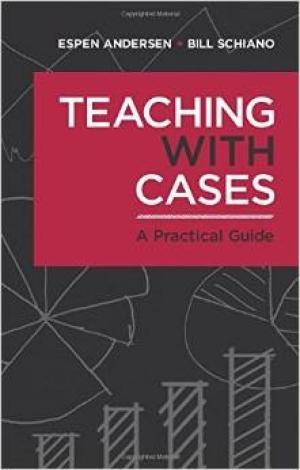
Some academic disciplines such as law and medicine have a long history of using case teaching as a pedagogical approach while other disciplines seldom employ case teaching. Espen Andersen, associate professor in the department of strategy and logistics at the Norwegian Business School, and Bill Schiano, professor of computer information systems at Bentley University, drawing from their experience of using case teaching in business schools, demonstrate the positive impacts case teaching can bring and provide a practical guide for instructors who would like to adopt this pedagogical approach. As readers move through the content, they will discover that the book covers topics broader than case teaching and offers rich insight into how classroom discussions can be effective toward student participatory learning development. As indicated in the title, Teaching with Cases is a practical guide. It is not only a practical guide for teaching with cases, but also covers basic teaching skills and techniques. These include: how to develop content; writing a syllabus; planning a class session; using guest speakers; employing role play; designing group discussions, assignments, and grading rubrics; debriefing a course and using feedback; handling small details such as seating arrangement; using technology; managing breaks and classroom behaviours; and using the white/blackboard effectively. The book is a comprehensive manual for teachers, new or experienced. While the comprehensiveness of the book is to be commended, more in-depth insights about case teaching are lacking as the book wanders around discussion-based teaching techniques rather than focusing on how to use cases effectively. The most helpful piece on actual case teaching is chapter 6, “Quantitative and Technical Material,” where the important value of case teaching is spelled out: “to foster an intuitive understanding of a situation and to learn to think and make decisions like a manager” (174).The best illustration on a teaching case (Dell computer’s build-to-order) is also found in this chapter. More guidance on how to craft out an effective teaching case to be used in both classroom and online discussions would be helpful. While I appreciate the authors’ sensitivity to language and culture as an issue in case teaching and an entire chapter devoted to addressing content and classroom dynamics such as gesture, custom, vocabularies, and so forth, the authors seem to generalize language and culture by national identities or geographical boundaries and fail to recognize the particularities and diversity with a culture. For example, Chinese students from Taiwan, Hong Kong, and mainland China have different cultural values and educational systems. Hence, their understanding of what connotes sound educational practices will vary as well. Even within those three localities, diverse expressions of customs and norms can be observed. To assume all Asian students think and behave the same way is problematic. The lack of a strong conclusion that ties it all together is a disappointment, especially since the book covers such a broad range of teaching skills and techniques. Overall, Teaching with Cases is a helpful guide for instructors, particularly those who are interested in engaging students in participatory learning. Readers may also find additional supplementary materials for this book online at http://academic.hbsp.harvard.edu/teachingwithcases.
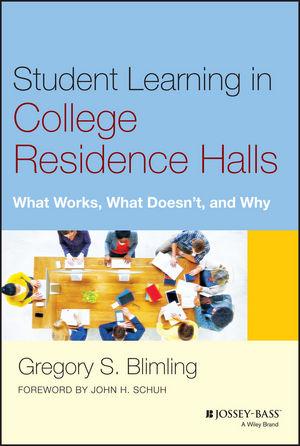
In a higher education climate of ever-increasing competition and demand for accountability, what residence halls can contribute toward institutional learning objectives has never been more important. Blimling’s comprehensive work takes into account not only this fact, but also the multiplicity of potential philosophies and desired outcomes that may guide residence life professionals’ efforts. The result is a nearly exhaustive list of possible approaches to fostering student learning in residence halls, substantiated by results from past studies. Blimling begins with a review of the history of on-campus housing, followed by a description of the major strands of thought in housing and residence life philosophies. In chapters 2 and 3 he moves on to discuss biological and psychological development in college students and how these and other factors impact learning and cognition. Chapter 4 addresses the effects of different types of residence hall learning programs, while chapter 5 takes a brief digression to discuss key considerations when selecting and training residence life staff. Chapter 6 discusses how the structure (physical and otherwise) of residence halls influences students, and chapters 7 and 8 focus on ways residence life staff may shape the social and academic climate of residence halls to promote learning. Chapter 9 provides an in-depth discussion of assessing residence life programs, including strategies for implementing assessments, using the results, and establishing a culture of assessment. The last chapter presents possibilities for the future of residence halls, based on current trends in higher education and residence life. The strength of Blimling’s work lies in its thoroughness, particularly with regard to evidence. The majority of each chapter is occupied with summarizing findings from the literature on various elements of its subject matter; certainly the book lives up to its title’s promise to show “what works, what doesn’t, and why,” in numerous aspects of student housing ranging from the effects of over-long hallways to the ideal size for a study group. The consequence of this intense focus, however, is that it occasionally obscures the broader context of the information. Practical applications are discussed for many individual techniques, but rarely are they generalized into more comprehensive strategies for programs and initiatives. This may be by design, to encourage readers to develop customized programs for their own unique contexts. In practice, however, it makes it somewhat difficult at first to identify the potential utility of the wealth of information in each chapter, let alone in the entire book. It is easy to imagine a residence life professional turning to this work to find evidence that a specific strategy will be effective, but more difficult to imagine one finishing the book with a clear idea of what future directions in programming to pursue. It is also worth noting that this book is written primarily for an audience of residence life professionals, and its usefulness to teaching faculty is limited. The principal exceptions are, as noted in the preface, “higher educational administrators and faculty who work with students in living and learning programs and other educational enrichment programs that operate in residence halls” (xvii-xviii). Faculty in residence will likely find it of interest, as will faculty advisors to, or participants in, living and learning groups in residence halls. For those simply interested in how to better integrate their teaching with residential learning initiatives, however, it will hold less value, as the majority of the work is focused on managing those aspects of student life that affect learning, rather than on designing or delivering educational programs themselves. For these reasons, I would recommend this book to residence life professionals and staff, faculty who participate in student residences, and faculty and graduate students in relevant areas of higher education administration. For all others, however, I would consider it optional.
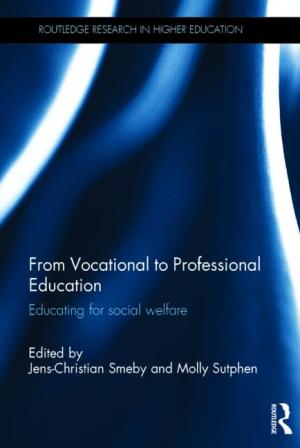
It is not often that edited volumes dedicated to teaching and learning are so easily able to cross the Atlantic. Happily, conference activity funded by the Research Council of Norway provided opportunity for Molly Sutphen of the University of North Carolina and Jens-Christian Smeby of Oslo and Akershus University College of Applied Sciences to collaborate with researchers in the field of education. In a series of international conversations, scholars addressed challenges faced by students in professional schools in the fields of education, social work, and healthcare (3) as a result of academic drift and the subsequent institutionalization of vocational programs into higher education (7). The purposes of this well organized, beautifully written, and coherent collection of essays is to identify these difficulties within their historical context, and – in light of current disciplinary methods – suggest recommendations for future development of the education of professionals. A near-constant defense of liberal arts education as of late has been accompanied since the mid-twentieth century with added pressure of assimilation of professional training in universities, specifically in the fields mentioned above. The professionalization of these programs is complex and the challenges are significant, facts often unknown to other disciplines; professional educators, to name one example, must master a complex knowledge base as well as curricular, pedagogical, and administrative abilities. Central to the success of these tasks within a higher educational setting, writes Smeby in his introductory chapter “Academic Drift in Vocational Education?” (7-25), is the necessity of “perceived coherence” on the part of the students that there are meaningful relationships between both theoretic and applied components of their education (25). But students are not the only ones looking for signs of perceived coherence; the transfer of the locale of professional education has had implications not only for students, but for faculty and the wider university culture as well. In Ala Agevall and Gunnar Olofsson’s “Tensions Between Academic and Vocational Demands” (26-49), three aspects of the transformation of higher education as a result of the academic drift are identified as worthy of note: cultural changes to university systems as they relate to hiring practices and student population; the way in which the link to the university system has altered perceptions of the professions; and the shift in emphasis of the university culture towards professional programs as a matter of concern, vis-à-vis credentials and training. After tracing generations of welfare professional programs in Sweden (28-30), the authors identify principle ways in which institutions of higher education can combine an academic education with professional mastery (31-35), followed by a case study in a Swedish setting. Subsequent chapters on the benefits of cross-field studies for professional students (Little, 50-69), coherence as it relates to bridging theory and practice (Heggen, Smeby, and Vågan, 70-88 and Laursen, 89-104), assumptions that emerge about and within research-based education (Kyvik, Vågan, Prøitz, and Aamodt, 105-23), use of evidence-based methods (Rasmussen, 124-36), dialogical pedagogies (Sutphen and Heggen, 137-45), and international trends in teacher education (Conway and Munthe, 146-63) are followed by a conclusion by the editors. The conclusion offers recommendations for models of pedagogies of coherence that include: “third space” learning (168-69); increased opportunity for research on practice (169); use of cases as opportunity for reflection on potential workplace experiences (169); greater collaboration between higher education and professional placement (169); and finally, educational leadership that is mindful of fragmentation (169-70). I am aware that the purpose of a book review in a journal for teaching theology and religion is to consider how it relates to or is useful for those in the fields of religion, theology, and religious studies. I am of the opinion – however optimistic it might be – that any analysis of education or pedagogy might be applied to any field, and this is true for Smeby and Sutphen’s edited volume on professional education, for this collection is particularly helpful at explaining some of the tensions that exist within universities and colleges around the coherence of the general education of professional students, and the way shifts in higher education have altered the landscape of the educational system, worldwide. In a liberal arts setting, the reality is that students in religion courses are most often there because the university has determined that the study of religion is essential for their general education; it is useful for both parties to recognize that students are seeking coherence and relevancy and are attempting to bridge theory and practice as much as their professors. . While one might hope that the relevancy of an education in the history or theology of any religion would be immediately obvious, nevertheless mindfulness of our students’ majors, disciplinary affiliations, professional aspirations, and desires for coherence can assist the religion professor in shaping her curriculum in such a way to make that applicability more transparent.
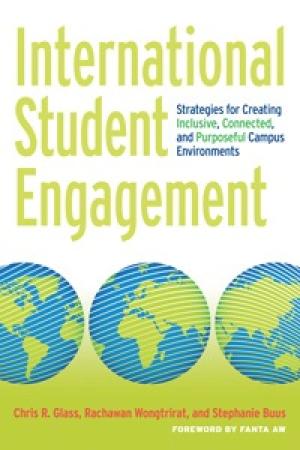
In 1950, just over 25,000 foreign students were enrolled in institutions of higher education in the United States. At the time this review appears on the Internet, that number will be close to 1 million (1). While many schools’ admissions offices have sought to increase their enrollment of international students as an important source of revenue, those who work at colleges and universities in the U.S. should understand that the integration of so many international students into campuses poses a special challenge. If faculty and administrators do not do it well through intentional policies and practices, institutions run the risk of failing the students who have chosen to come to their schools. This book seeks to identify the types of campus environments that lead to the greatest flourishing and growth for international students. The authors draw from two primary types of data in order to discover best practices for integrating international students on campus. They combine analysis of the big data provided by the ongoing Global Perspective Inventory with stories from individual international students. As they put it, the authors’ goal is to use both the “big stories” and the “small stories” to learn what factors contribute to flourishing for such students. The small stories are one of the real strengths of the book, as they are drawn from a variety of schools: small private liberal arts colleges, large state universities, and community colleges are all represented. Over the course of the book, the authors tackle a number of big issues that they see as central to international student flourishing. Individual chapters are devoted to: how diversity is recognized and addressed in the classroom; how international students are involved in campus student leadership; the roles that friends and peers, family, and social media in helping students; and what types of campus contexts create a sense of belonging. Ultimately, the authors conclude that intentional campus-wide policies and practices that support integration of students into many different aspects of campus life are the most successful. They give a number of specific suggestions for best practices, which are well summarized in the last chapter of the book. One of their central arguments is that such measures should not be limited to particular offices (the advising office, the admissions office, and so forth), but that entire campus cultures need to be adjusted, and that this requires buy-in not only from administrative units, but from academic units as well. This book provides much to think about, and would be useful for people in a number of different positions within academia. It is a welcome contribution at a time when faculty and administrators are engaging with the question of what it means to have increasing numbers of international students in college, university, and seminary classrooms.
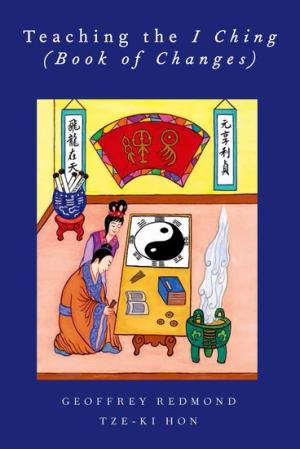
The I Ching (or Yijing, Book of Changes) is one of the great works of world literature, but at first approach it can be perplexing at best. Geoffrey Redmond is a scholar of textual criticism and Asian spiritual traditions (he is also an MD). Tze-ki Hon, professor of history at the State University of New York at Geneseo, is a specialist in Chinese cultural history and classical Chinese thought, including the commentaries on the I Ching. Together these authors provide a judicious, illuminating account of this classic Chinese text. Teaching the I Ching is a valuable reference for scholars and students alike, and a superb sourcebook for teaching the I Ching at the undergraduate level. The authors trace the complex history of the I Ching’s development through three millennia, beginning with its Bronze Age origins in divinatory practices using yarrow sticks, precursors of the hexagrams of the traditional work. The earliest texts, preserved on bound bamboo strips, are first attested to around 300 BCE, but they hearken back to much earlier exemplars. The first authoritative collection, known as the Zhouyi, was composed in the Western Zhou period, 1046-771 BCE. An expanded version of this text was “canonized” by royal decree in 136 BCE, deemed as a classic under the authority of Confucian tradition. In the modern era, archaeology has turned up many early witnesses to the text, largely from ancient tombs. These have spurred new assessments of the textual tradition. In the modern era the I Ching has met varied fates. It came under sharp criticism at the hands of the Chinese “Doubting Antiquity Movement” of the 1920s. Mao Zedong banned the text, at times. During the Cultural Revolution the use of the I Ching for divination was widely regarded as a superstitious, “feudal” practice. Yet by the 1980s and 1990s a popular movement called “Yijing Fever” widely introduced new mass populations to the I Ching. There is also a survey of the reception of the I Ching in the West, from Christian missionaries encountering the work in the sixteenth to nineteenth centuries, to C. G. Jung’s engagement of the text, to the I Ching’s (dubious, perhaps?) status as a countercultural icon. The book gives special attention to the role of women in the I Ching, especially the subordination of the feminine in the traditional Chinese yin/yang duality. There are also valuable chapters on the cosmology and ethical principles of the I Ching. The book closes with an extensive “Readers Guide” to the I Ching, describing the standard translations of the work, bilingual editions, concordances and reference works, online versions of the I Ching, and other digital resources. There is also a working orientation to the structure of the text, with instructions on how to consult the I Ching, should one wish to pose a question to this ancient, still vital text.
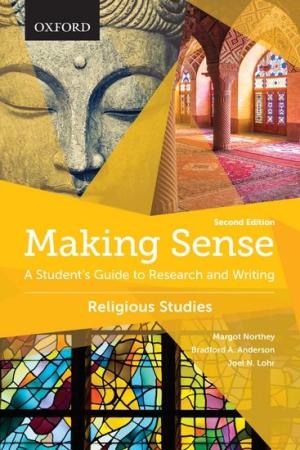
This second edition, like the first, is part of a series of volumes directed towards beginning college students. Margot Northey is the first author of each volume, including the eighth edition of the general Making Sense: A Student’s Guide to Research and Writing, and there is considerable overlap among the different volumes that focus on specific subject areas. Distinctive to this book is a short chapter, “Getting to Know Religious Studies,” and the incorporation of examples from the study of religion into many of the other nineteen chapters. Nonetheless, the focus is primarily on those general processes of thinking and self-expression that are common to many college courses. Because it does not focus narrowly on a specific area of the undergraduate study of religion, this book could easily be recommended, or even required, reading in virtually any course. Some instructors might find some of the advice to be too elementary, but there is helpful material for almost any student, including chapters on “Common Errors in Grammar and Usage,” “Punctuation,” and “Misused Words and Phrases,” as well as a glossary. Since scholarship on religion uses a variety of ways of documenting research, the chapter that outlines the requirements of the Chicago, MLA, and APA systems of reference and charts the differences among them could be especially helpful to beginning students. Throughout the book, the authors urge students to think of themselves as “engaged learners” who aim to make the most of their education by taking careful notes, seeking out their teachers, preparing for writing assignments well in advance, and using feedback on their work to identify both strengths on which they can capitalize and weaknesses that need to be remedied. Consequently, the portrait of the ideal students to whom the book is addressed may strike some as insufficiently tempered by the harsh realities of sporadic attendance, bored indifference, and atrocious time management with which so many teachers in higher education are familiar. Nevertheless, the authors offer concrete advice and some step-by-step procedures that can help any student move towards becoming the type of engaged learner that they envisage and who many would love to have in their classes. The focus of this volume is squarely on writing, with more than half of the chapters devoted to some aspect of the writing process, including writing essays (with a separate chapter on comparative essays), writing book reports and book and article reviews, writing essays for tests, and “Writing with Style.” Complementary chapters address finding and using appropriate sources and documenting them properly. Although the book briefly discusses reading religious texts, teachers who are looking for guidelines about how to introduce students to the kind of careful, patient, analytical reading of texts, objects, films, field observations, and other sources frequently used in the study of religion will need to look elsewhere. Nonetheless, this is a book that could be helpful to many teachers of religious studies.
Wabash Center Staff Contact
Sarah Farmer, Ph.D
Associate Director
Wabash Center
farmers@wabash.edu